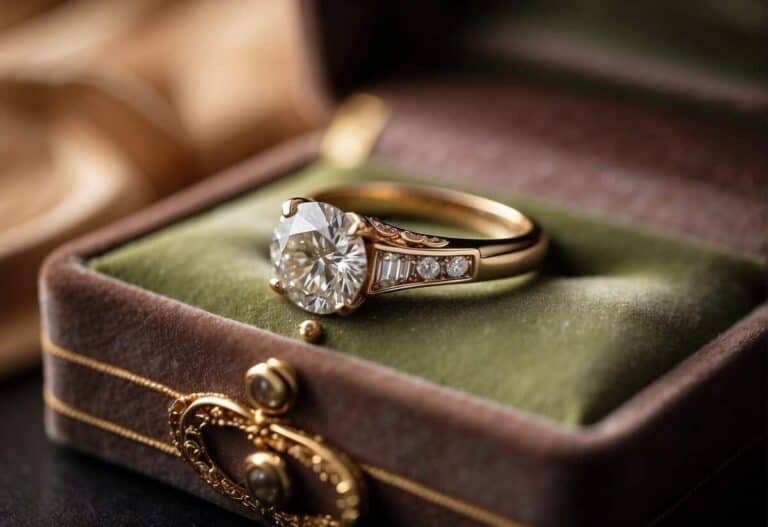Why Do Dads Walk Their Daughters Down the Aisle? Unveiling the Tradition’s Significance
Walking down the aisle on your wedding day is a moment filled with significance and tradition. It’s a ceremonial passage that marks the transition from single life to marital commitment. One prominent aspect of this tradition involves the father walking his daughter down the aisle, a custom deeply rooted in history and loaded with symbolism. This act is often viewed as a loving gesture, signifying the father’s support and approval as he ‘gives away’ his daughter to her future spouse.

The practice of fathers escorting their daughters down the aisle has evolved over time. Originally, it may have reflected the transfer of guardianship, with the father handing over his protective duties to the groom. Today, for many, it is seen as a touching display of familial love, while others interpret it in a more contemporary light, choosing to see it as representing the bride’s own choice to enter into marriage. Despite its traditional origins, the meaning of this ritual is subject to personal interpretation and is often adapted to fit modern values and family dynamics.
Key Takeaways
- The act of a father walking his daughter down the aisle is steeped in tradition with historical significance.
- Symbolism plays a key role in this tradition, with varied modern interpretations that align with contemporary values.
- Options for personalizing this aspect of wedding ceremonies reflect the changing roles and responsibilities within today’s marriages.
Historical Context and Evolution of the Tradition

The tradition of fathers walking their daughters down the aisle has its roots deep in history, evolving from transactions to tender moments in today’s love-based marriages.
Origins in Arranged Marriages and Dowries
Historically, the practice of arranged marriages was prevalent, where marriage was more of an economic or social transaction than a romantic union. In these arrangements, the tradition of the father walking his daughter down the aisle was symbolic of a dowry exchange, essentially transferring custody and care from one man to another. It represented a legal transaction where the father “gave away” his daughter, along with a dowry, which could include land, money, or goods to the groom and his family.
Transition to Love-Based Marriages
As marriages evolved to become based on love rather than economic necessity, the meaning behind this wedding tradition changed as well. Now, it’s viewed as a sign of support and blessing from the father to the couple’s union. The tradition has also become more flexible, adapting to different family dynamics and personal preferences, with some brides opting to walk the aisle alone or with other family members.
Symbolism and Modern Interpretations

The tradition of a father walking his daughter down the aisle has evolved over time, and today it carries a blend of symbolism and modern interpretations. These nuances vary widely across cultures, and non-traditional families, including LGBTQ couples, have found ways to personalize this practice to better represent their values and relationships.
Father’s Role and Significance
Historically, the father’s role in walking the bride down the aisle signified his endorsement and blessing of the marriage. In contemporary times, this gesture is often seen as a demonstration of support and love, rather than a transfer of guardianship. The act can be a poignant moment for the father and the bride, symbolizing the father’s recognition of the bride’s journey into a new life with her partner.
Cultural Variations of the Aisle Tradition
Around the world, the tradition of walking down the aisle varies greatly. In some cultures, both parents accompany the bride, emphasizing the collective support of the family. In others, a different family member who holds significant meaning in the bride’s life may take on this role. These variances reflect the diverse ways in which societies view marriage, family, and communal endorsement.
Adapting the Practice for LGBTQ Couples and Others
For LGBTQ couples and other non-traditional families, the aisle tradition is often adapted to fit their unique circumstances. Whether it involves both individuals being escorted by family members or choosing to walk down the aisle together, the focus is on customizing the experience to honor their love and partnership. This inclusive approach respects the significance of the milestone while celebrating the couple’s individuality and story.
Roles and Responsibilities During the Wedding

In a wedding, your role as the father of the bride extends beyond just walking her down the aisle. It includes offering support, blessings, and managing both financial and emotional commitments.
Importance of Support and Blessing
As the father of the bride, you provide a foundational layer of support on this big day. It’s a moment where you have the opportunity to give your blessing and show approval of the union. This gesture symbolizes your acceptance of the groom into your family and your support for the bride in her new journey.
Financial and Emotional Commitments
Traditionally, you might also bear the financial liability of the wedding ceremony. This can range from funding major parts of the event to contributing in ways that are meaningful to you and your daughter. Along with financial support, your commitment to being emotionally available and providing guidance throughout the wedding planning process is paramount. This emotional investment ensures your daughter feels loved and valued as she transitions into this new chapter of life.
Contemporary Alternatives and Personal Choices

In today’s weddings, you have the flexibility to reshape traditions to better reflect your personal values and relationships. Whether it’s a symbol of love and support or a special moment customized for you, exploring contemporary alternatives to walking down the aisle can make your special day truly your own.
Walking Down the Aisle Solo or with Both Parents
More brides are choosing to walk down the aisle solo, embracing their independence and challenging the notion that they are being ‘given away’. This can be a profound statement of self-authority on a day that celebrates a major life choice. Alternatively, walking with both parents is a way to honor the love and support from both sides, reflecting the idea of leaving one family to form another without implying a transfer of protection or property.
Different Ways to Honor Family Members
To add a special touch to your special day, consider different ways to honor family members. If you prefer not to focus on the tradition of a father symbolically handing over authority or protection, you might involve your family in other roles. For example, family members can be included as part of the wedding party, give readings, or take part in a unity candle ceremony. This approach ensures that your loved ones are still a featured part of your wedding while moving away from more traditional aspects of weddings that may not resonate with you.
Frequently Asked Questions

In exploring the tradition of fathers walking their daughters down the aisle, you’ll uncover not only cultural significance but also how the practice has evolved. Here are some common questions that delve into this enduring wedding custom.
What is the significance of fathers walking their daughters down the aisle at weddings?
Traditionally, fathers walking their daughters down the aisle symbolizes the passing of care from the bride’s family to the groom and his family. It’s a gesture that has been interpreted as blessing the union and supporting the couple’s decision to marry.
Who typically escorts the bride down the aisle when there is no father present?
When a bride’s father is not present, anyone significant to her can take on the role of escorting her down the aisle. This might be a close family member like a mother, sibling, or a figure of importance in the bride’s life, who can be chosen to accompany her during this moment.
What historical traditions involve the father walking the bride down the aisle?
The practice has roots in historical traditions, where a father’s act of walking his daughter down the aisle was connected to the notion of transferring authority over the bride to the groom, including ensuring the dowry was paid.
What does the act of a father giving away his daughter at a wedding symbolize?
The act of giving away the bride by the father often symbolizes his endorsement of the marriage and his support for the couple. It’s evolved from a transactional origin to a meaningful moment of endorsement and familial approval.
Are brides required to have their fathers walk them down the aisle?
Brides are not required to have their fathers walk them down the aisle. This aspect of a wedding is entirely up to the bride’s preference and comfort. Sometimes, brides choose to walk down the aisle alone or with other loved ones, reflecting a more modern approach to the tradition.
How did the custom of fathers walking their daughters down the aisle originate?
The custom originated from the idea that a father was responsible for his daughter until her marriage. By walking her down the aisle, he was physically guiding her into her new life with her spouse, signifying a change in guardianship and blessing.



